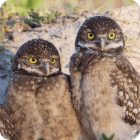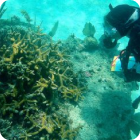
Happy Bat Week! With Halloween fast approaching, now is the perfect time to shine a spotlight on these incredible nocturnal creatures and their essential role in our ecosystem. Florida has 13 species of bats considered native to the state, with another seven species that appear here from time to time. Often misunderstood and sometimes feared, bats are an integral part of wild Florida.
- Natural pest controllers: A single bat can eat thousands of insects in just one night, including mosquitoes, which not only reduces the need for pesticides but also keeps disease-spreading pests in check.
- Pollinators and seed dispersers: Some species of bats are vital for pollinating flowers, especially those that bloom at night. Others play a crucial role in dispersing seeds, aiding in the regeneration of forests.
- Economic impact: By consuming vast amounts of agricultural pests, bats save the US agriculture industry billions of dollars annually in lost crops and pesticide costs.
While they provide immense ecological and economic benefits, bats in Florida, like elsewhere, face numerous threats, namely habitat loss, pesticides, and disease. White-nose syndrome, a fungal disease, has devastated bat populations in North America. While not yet widespread in Florida, it remains a concern. These threats have especially impacted the Florida bonneted bat (Eumops floridanus), causing it to be categorized as endangered. It’s North America’s rarest and largest insect-eating bat, with a wingspan reaching up to 20 inches. What makes this bat even more unique is that it’s found only in a few areas in south Florida!
Bats are a critical and fascinating part of Florida’s rich biodiversity. Bat Week serves as a reminder of their importance and the need to protect them. To join our work conserving their habitat, surveying their homes, and more, donate now.











